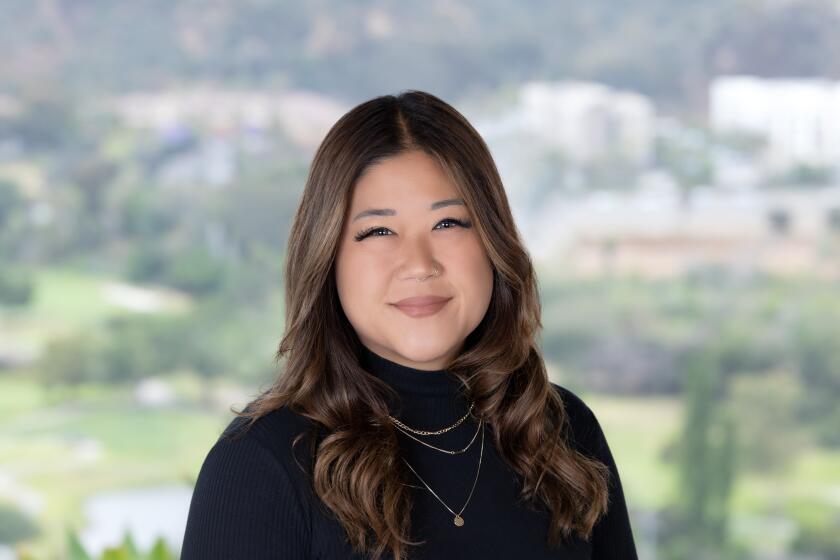Signing Is Approved as Foreign Language Substitute at School
- Share via
Both deaf and hearing students at Madison High School will be able to study sign language beginning next year and satisfy the San Diego Unified School District’s foreign language requirement. Approval of the course came Tuesday by the district’s board of education.
But the battle remains by advocates for American Sign Language (ASL) to have the language be accepted at the university level. An attempt to gain approval at San Diego State University, the only California State University (CSU) campus with a foreign language graduation requirement, may be made next spring. A special systemwide committee of the University of California is also studying whether ASL should be declared a foreign language.
At issue is the nature of ASL as a language compared with traditional foreign tongues such as Spanish, French, Russian and Chinese, and whether it should be given equal status despite its lack of a written literature. Scholars are debating whether ASL envelops a deaf culture distinct from that of mainstream America.
“ASL is as distinct from English as Chinese is,” said Bonnie Sherwood, an interpreter and coordinator for deaf programs in the San Diego city schools. “It has its own syntax and grammar, and linguistic constraints, and is three-dimensional, a natural language for the deaf that uses hand shape, palm orientation, location and body movement.
“And many languages have only an oral tradition and are not written.”
Action by the state Legislature last year allows ASL to be included as a foreign language offering in California high schools. Sherwood attributes the approval to the fact that more educators are learning about the nature of ASL, that it developed naturally--similar to other approved languages--from interaction between deaf people in the early 19th Century who were brought together in special state schools and who experimented with ways to communicate with each other.
Sherwood is a member of a special curriculum committee drawing up a two-semester course to be offered next September at Madison. The school district’s program for deaf students is centered at the Clairemont area campus.
Revamping Under Way
“We are completely revamping the present course which has really been teaching just a form of signed English,” Sherwood said, referring to a longtime course at Madison for hearing students who want to communicate with deaf friends on the campus. “It hasn’t been ASL.”
Sherwood explained that deaf students in the United States are generally taught basic subjects in signed English, where the interpreter “signs” words in the normal word-and-sentence order of English grammar.
“The goal of the district is to make the students literate in English, so we have been teaching English using this visual form (signed English) to allow them to acquire English more easily,” she said.
But signed English is not a natural language, but rather an invented language to portray English to deaf people, David Perlmutter, professor of linguistics at UC San Diego, said. “It’s simply another way of using English, “ Perlmutter said. “Just like you can write English with the alphabet or with the Morse code, but it’s still the same language.”
Deaf people use ASL to communicate with each other in everyday activities, Sherwood said.
“Historically, deaf kids who have deaf parents learn ASL and they teach it to other deaf kids whose parents are not deaf,” Sherwood said. “It is easily acquired by deaf people because the language, although very sophisticated and complicated in its structure, has been naturally derived. It appeared on Earth like other languages did, as a result of interaction between people.”
Increase in Research
Perlmutter said that linguistic research into ASL and other signed languages around the world--there are such deaf languages in many countries--has accelerated during the past decade as a result of advances in language theory. He said the current examination by a UC educational policy committee is considering several issues, including the importance of having a written literature as critical to defining a language.
“There are some proposals that address this aspect of ASL, such as the fact that ASL poetry can be transmitted on videotape” and whether that would satisfy requirements for a literature base, Perlmutter said.
At San Diego State, the faculty is expected to consider the issue next spring, although a statewide CSU committee on graduation requirements may establish a systemwide foreign language requirement that could include ASL.
“This came up before the Academic Senate four years ago and was not approved,” Bonnie Neumann, San Diego State Dean of Undergraduate Studies, said. “The faculty at that time was not convinced that there is a culture of the deaf that can be learned through ASL.
“But at the time, I don’t think we had a good understanding of ASL, in that it was not taught on campus and most people were perhaps more aware of signed English, which would never have a prayer of being accepted.
“I think now a better argument might be made because we have some key people on campus who are more familiar with ASL.”
More to Read
Sign up for Essential California
The most important California stories and recommendations in your inbox every morning.
You may occasionally receive promotional content from the Los Angeles Times.










